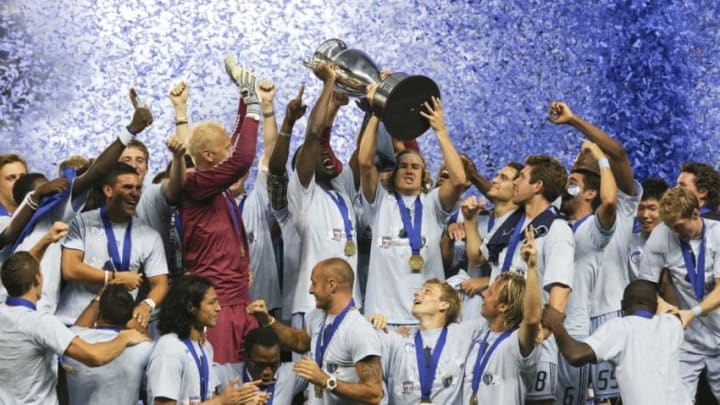Sporting KC has been one of the most successful teams in recent MLS history. And it all stemmed from a controversial rebrand a decade ago.
A radical rebrand led Sporting Kansas City to where it sits today. It all started in August 2006, when Lamar Hunt, just four months before his death, sold the Kansas City Wizards to a local ownership group made up of six businessmen led by Cliff Illig and the late Neal Patterson.
Things got moving in 2007 when the club finalized details for their new stadium in Kansas City, Missouri, but the economic crisis held the construction off and they eventually moved the stadium site to the other side of the border in Kansas City, Kansas. Construction eventually began in January of 2010. The public knew of the new stadium on the way, but they knew nothing of a club rebrand.
More from MLS Multiplex
- Javier Milei Elected in Argentina: Potential Impacts on MLS and Signings of Argentine Players
- Orlando City and New York City FC in the Battle for Matías Arezo; Grêmio Enters Negotiations! Who Will Come Out on Top?
- USA, Honduras, Panama, and Canada Close in on a Spot in the 2024 Copa America
- De Gea Turns Down Al-Nassr’s Lucrative Offer: Speculation Points to Possible Reunion with Messi at Inter Miami
- Messi’s Magnetic Impact in the United States
The Wizards endured an unsuccessful 2010 MLS campaign. They did generate some excitement with a 2-1 friendly win over Premier League champions Manchester United. But that was not the most significant moment of that day.
The friendly hosted the rebrand announcement: the club would undergo a complete rebrand, which included a new name, logo, stadium, and the signing of star Mexican forward, Omar Bravo. The name ‘Sporting’ did not sit well with many around the city, including local sports anchor Jack Harry, who was as skeptical as anyone in mocking the club on the local 41 Action News, a video that has since been taken down.
Ten years and four major trophies later, Sporting Kansas City can confidently claim that they have completed the greatest rebrand in professional sports. And they did all this without a prolific superstar, but by making the most out of the talent they unearthed and developed. The stars of the show, players like Dom Dwyer, Kei Kamara, Benny Feilhaber, Tim Melia, Graham Zusi, and Matt Besler, were built, not bought.
The thoroughness and inventiveness of the front office staff has been superb. From believing in Peter Vermes, who is now the longest-serving head coach in MLS, and by some distance, to their success in the SuperDraft, signing free-agents, and investing heavily in their youth development, Sporting KC showed what an up-to-date, progressive club should look like before they even existed.
And the success was not limited to the pitch. Despite being the seventh oldest stadium in MLS, Children’s Mercy Park continues to be among the most modern stadiums in the league thanks to their exceptional planning and vision. The club increased its average attendance by more than 7,500 and nearly doubled its ticket sales from 2010-2011. They also continue to build up soccer in Kansas City, which now has numerous facilities which host the largest youth soccer league in the United States, the Heartland Soccer Association.
Overall, the brand of soccer has absolutely exploded in Kansas City over the past decade. From the professional game to the kids in the parks, this would never have happened without that daring rebrand. Kansas City would not have hosted numerous USMNT and USWNT matches, the crazy World Cup watch parties at the Power and Light District, and would certainly not be in the conversation to host matches at the 2026 World Cup.
And yet, all this success, growth, and soccer prosperity stems from the brave and largely unpopular decision to rip it all up and start over. What a decision that was.
